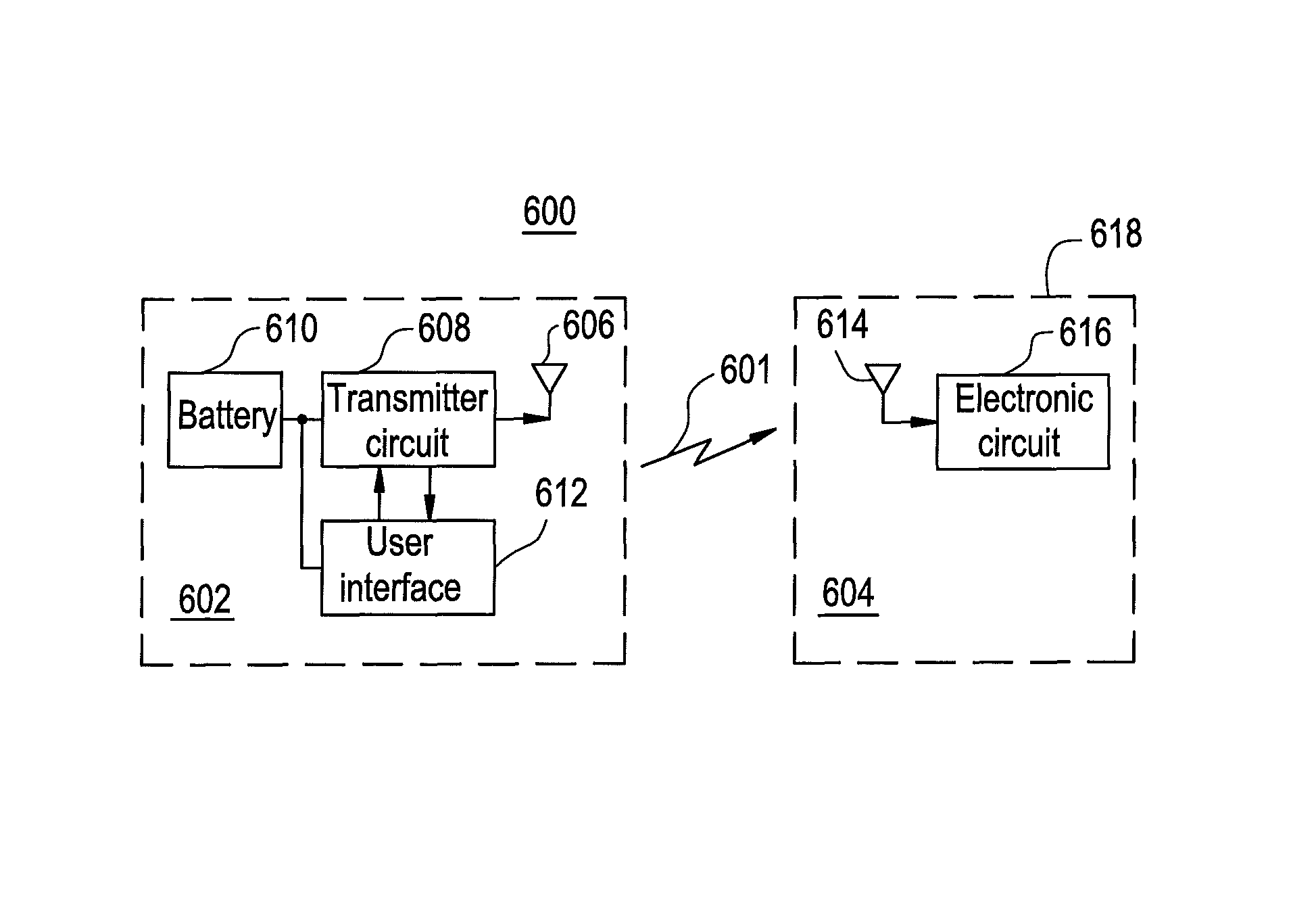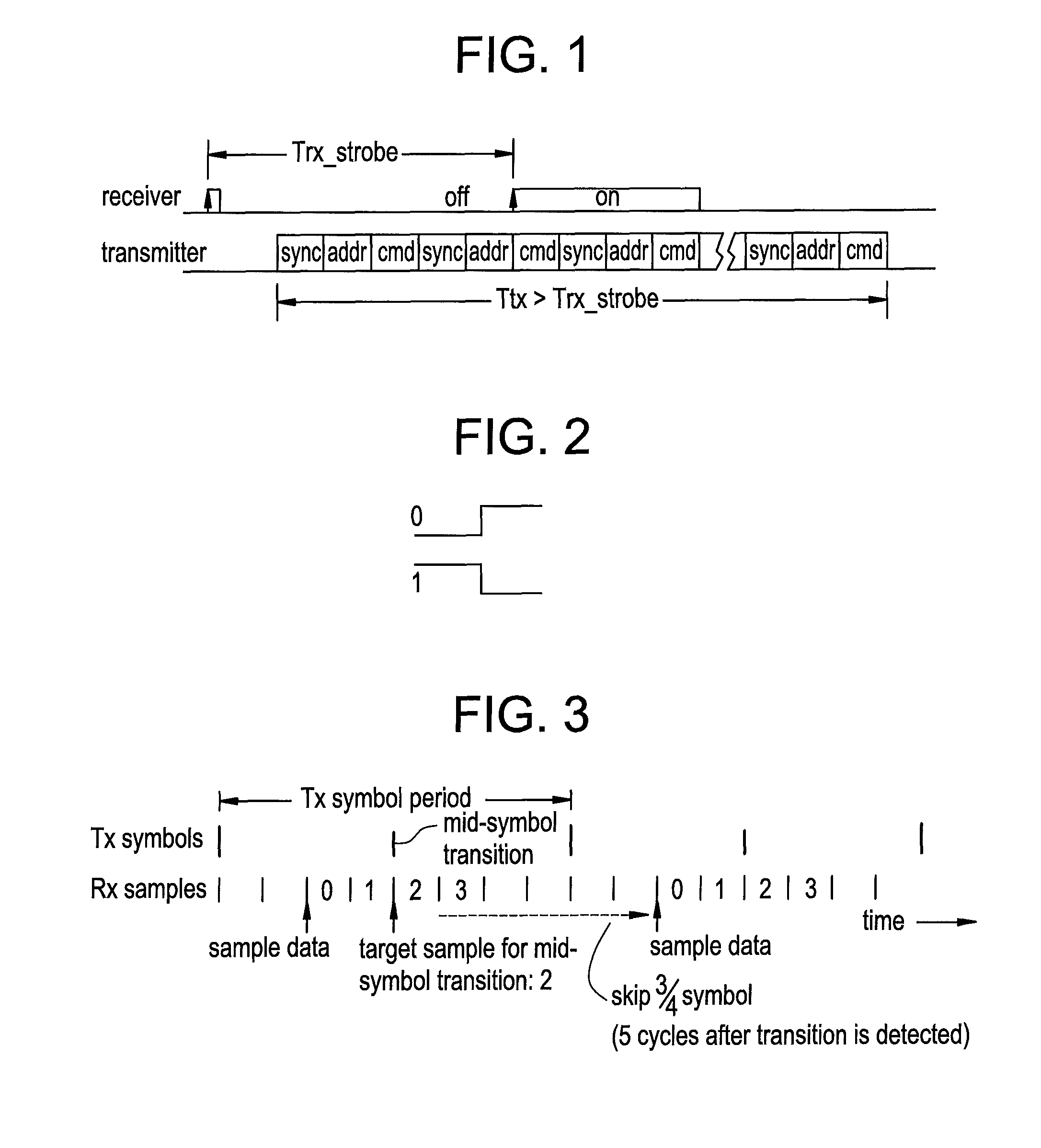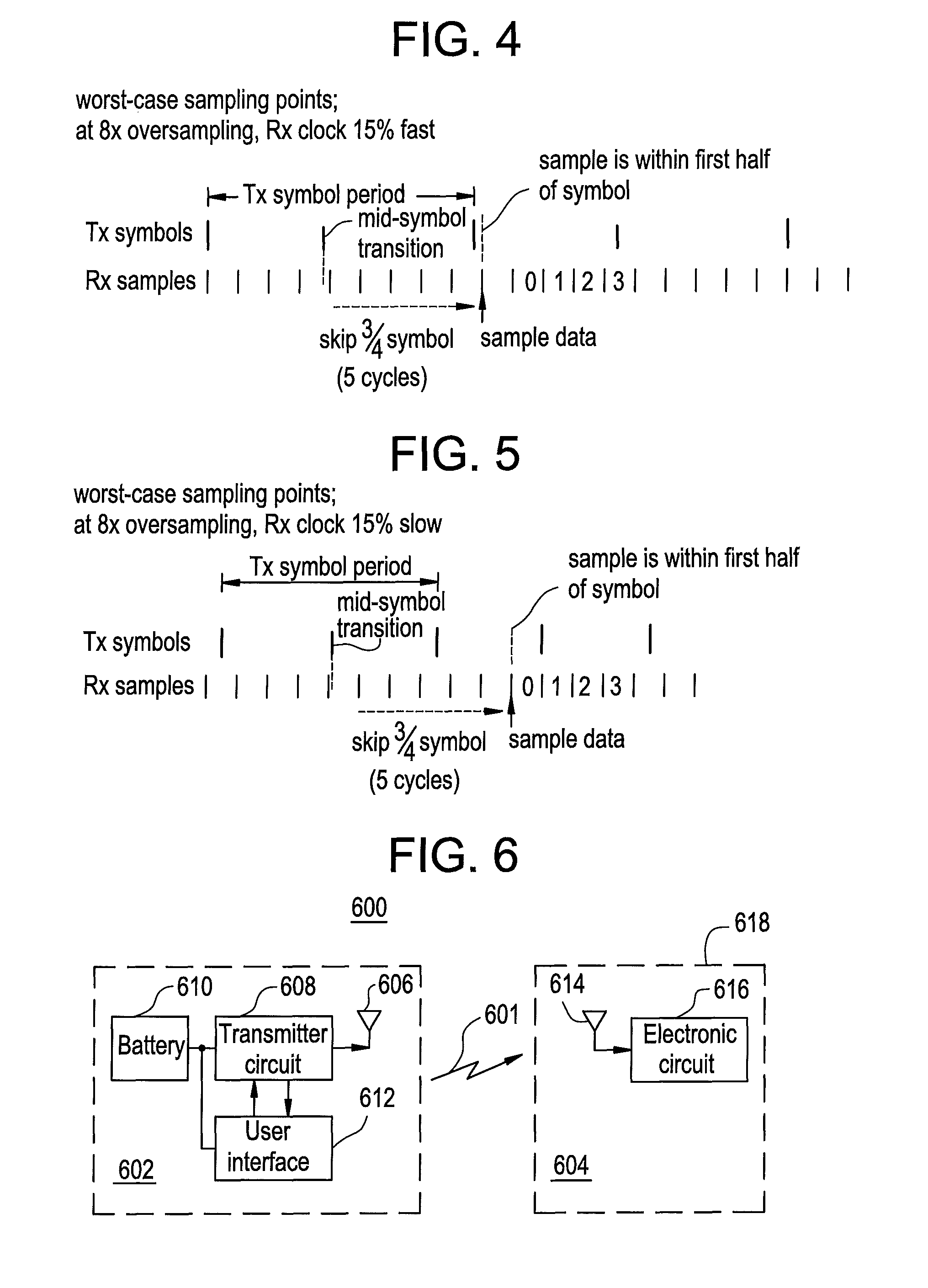Wireless communication protocol for low power receivers
a low-power receiver and wireless communication technology, applied in the field of powered ophthalmic lenses, can solve the problems the difficulty of manufacturing such components directly on the lens, and the proper combination of devices could yield potentially unlimited functionality, etc., to achieve the effect of reducing the active or passive of the receiver, reducing the battery voltage drop, and reducing the power consumption
- Summary
- Abstract
- Description
- Claims
- Application Information
AI Technical Summary
Benefits of technology
Problems solved by technology
Method used
Image
Examples
Embodiment Construction
[0034]The present invention is directed to a wireless communication protocol which requires less power to implement and thereby allows associated receivers to have a reduced energy requirement or capacity and smaller area and volume requirements compared to prior art systems. This communication protocol is particularly advantageous for extremely small, portable devices such as those that may be utilized in medical devices including powered ophthalmic lenses. While the communication product described herein may be utilized with any transmitter and receiving system, it may be particularly advantageous to extremely small systems with limited power resources. Accordingly, the description of the wireless communication protocol will be described, where required, with respect to powered ophthalmic lenses which may as described subsequently comprise a wireless communication system.
[0035]Conventional contact lenses are polymeric structures with specific shapes to correct various vision probl...
PUM
 Login to View More
Login to View More Abstract
Description
Claims
Application Information
 Login to View More
Login to View More - R&D
- Intellectual Property
- Life Sciences
- Materials
- Tech Scout
- Unparalleled Data Quality
- Higher Quality Content
- 60% Fewer Hallucinations
Browse by: Latest US Patents, China's latest patents, Technical Efficacy Thesaurus, Application Domain, Technology Topic, Popular Technical Reports.
© 2025 PatSnap. All rights reserved.Legal|Privacy policy|Modern Slavery Act Transparency Statement|Sitemap|About US| Contact US: help@patsnap.com



